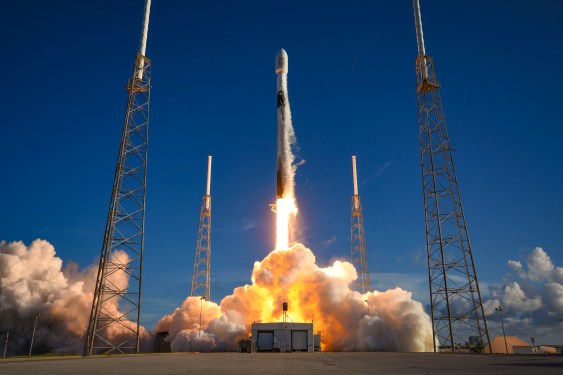The U.S. Space Force has awarded a massive contract worth $733 million to SpaceX as part of an ongoing program aimed at fostering competition among launch providers. The award includes seven launches for the Space Development Agency and one for the National Reconnaissance Office, all expected to use Falcon 9s and occur no earlier than 2026.
A New Era in Launch Competition
This significant contract is part of the U.S. Space Force’s Space Systems Command (SSC) program known as "National Security Space Launch Phase 3 Lane 1." The third round of contracts was split into two lanes last year: Lane 1, for lower-risk missions and near-Earth orbits; and Lane 2, for heavy-lift missions and more demanding orbits. The Space Force selected SpaceX, United Launch Alliance, and Blue Origin to compete for launches under Lane 1 earlier this summer.
The Contract Details
The contract award period is from fiscal year 2025 to fiscal year 2029, with the potential for a five-year extension. The Space Force anticipates awarding at least 30 missions over that period. This massive new contract has a total expected value of $5.6 billion over five years.
Competition and Innovation
The SpaceX win may seem like a foregone conclusion this time, but with the emergence of new launch companies and vehicles in the next few years, competition is likely to heat up soon. Lt. Col. Douglas Downs, SSC’s materiel leader for space launch procurement, expressed optimism about the potential for increasing competition and diversity in the industry.
The Future of Launches
In a press release announcing the contract, Lt. Col. Downs stated that the Space Force expects to see "increasing competition and diversity" with the ability to on-ramp new providers. The Phase 3 Lane 1 award period is an opportunity for SpaceX and other launch providers to showcase their capabilities and compete for more contracts in the future.
The Potential Impact
This contract award has significant implications for the space industry, with potential benefits including:
- Increased competition: The ability of new launch providers to enter the market could lead to increased competition, driving innovation and reducing costs.
- Diversification of capabilities: With multiple launch providers competing for contracts, the Space Force can benefit from a wider range of capabilities and technologies.
- Improved mission success rates: With more companies competing for launches, there is likely to be greater focus on ensuring mission success and minimizing the risk of failure.
The Road Ahead
As the space industry continues to evolve, it will be interesting to see how this contract award impacts the market. The emergence of new launch providers and vehicles could lead to increased competition and innovation in the years ahead.
Key Players
- SpaceX: With its reusable rockets and proven track record, SpaceX is well-positioned to take advantage of the contract award.
- United Launch Alliance: As a joint venture between Boeing and Lockheed Martin, United Launch Alliance has a strong reputation for delivering successful launches.
- Blue Origin: Despite not yet achieving orbit, Blue Origin’s New Glenn rocket is expected to compete in the Lane 1 contract awards.
Conclusion
The U.S. Space Force’s award of the $733 million contract to SpaceX marks an important milestone in the ongoing effort to foster competition among launch providers. As the space industry continues to evolve, it will be exciting to see how this contract award impacts the market and drives innovation in the years ahead.
The Importance of Competition
The ability of new launch providers to enter the market could lead to increased competition, driving innovation and reducing costs.
- Innovation: With multiple launch providers competing for contracts, there is likely to be greater focus on ensuring mission success and minimizing the risk of failure.
- Cost savings: Increased competition can drive down costs, making launches more affordable for the Space Force and other customers.
- Improved performance: With multiple companies competing for launches, there is likely to be greater emphasis on improving launch performance and reducing delays.
The Potential Impact on the Industry
The contract award has significant implications for the space industry, including:
- Increased investment: With more contracts available, there may be increased investment in new technologies and infrastructure.
- Improved collaboration: As companies compete for launches, they may be more likely to collaborate and share best practices.
- Greater focus on sustainability: With multiple launch providers competing for contracts, there is likely to be greater emphasis on sustainable practices and reducing environmental impact.
Conclusion
The U.S. Space Force’s award of the $733 million contract to SpaceX marks an important milestone in the ongoing effort to foster competition among launch providers. As the space industry continues to evolve, it will be exciting to see how this contract award impacts the market and drives innovation in the years ahead.
Sources
- "National Security Space Launch Phase 3 Lane 1" [U.S. Space Force]
- "SpaceX Awarded $733 Million Contract by U.S. Space Force" [SpaceNews]
- "United Launch Alliance to Compete for National Security Space Launch Contracts" [Aerospace America]
